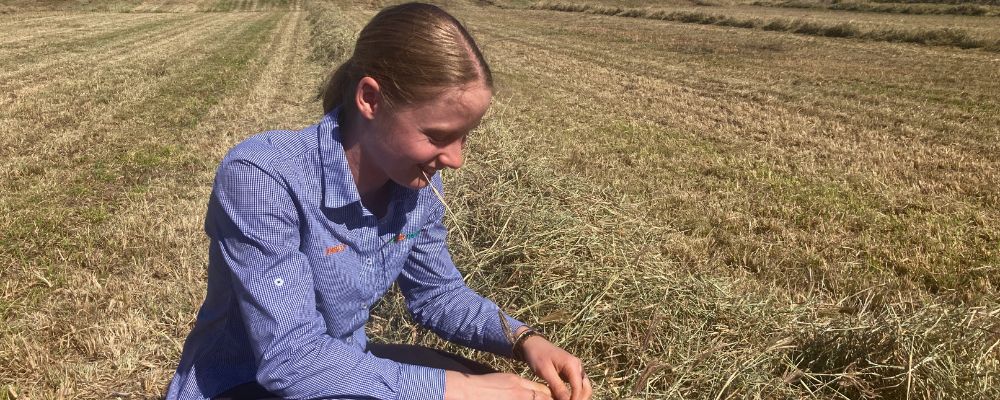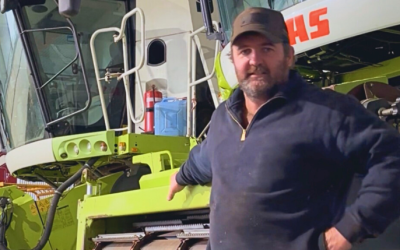
Photo: Checking moistures in the paddock.
Producing quality, dry hay can sometimes be challenging for hay producers. This can lead growers to consider using inoculants and hay preservatives. While these additives have their role in the hay production system, it is important to know when their use is appropriate and what impact they may have on the quality and marketability of your product.
Important Considerations When Using Inoculants
If you’re considering inoculants, you should keep in mind:
- The value of your hay crop weighed against the cost of setting up an applicator and using additives.
- Whether the market and end user will accept treated hay. Some chaff mills, export markets, and domestic buyers may not accept hay treated with additives.
Situations Where Additives May Be Suitable
- Inclement Weather During the Curing Period
Inclement weather can make it very difficult to produce quality hay using standard methods.
- Drought Conditions During the Crop Growing Season
Drought can lead to crop failures, where the only viable option may be to make hay. These “failed crops” are particularly challenging to dry due to the presence of stems with nodes and cereals with seed heads still in the boot.


